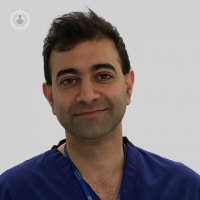Understanding endometriosis: Symptoms, causes, and treatment options
Escrito por:Endometriosis is a chronic condition affecting approximately 10% of women of reproductive age worldwide, where tissue similar to the lining of the uterus (endometrium) begins to grow outside the uterine cavity. These endometrial-like tissues may attach to organs such as the ovaries, fallopian tubes, and even the intestines.
Every month, these tissues respond to hormonal changes during the menstrual cycle, thickening and breaking down like the normal uterine lining. However, because they are outside the uterus, they cannot exit the body, causing inflammation, pain, and scar tissue (adhesions) over time.

Causes
The exact cause of endometriosis remains unclear, but several theories exist. Retrograde menstruation is one theory, where menstrual blood flows backward into the fallopian tubes and pelvis, causing endometrial cells to implant outside the uterus.
Another possibility is immune system disorders, where the body fails to recognise and destroy endometrial-like tissue growing in abnormal areas. There is also a genetic component, as endometriosis is more common in women with a family history of the condition.
Symptoms
Symptoms of endometriosis can vary significantly, with some experiencing severe symptoms while others have mild or none at all. Common signs include pelvic pain, often worse during menstruation, painful intercourse, heavy or irregular periods, and digestive issues like bloating and constipation.
In severe cases, it can lead to infertility, as scar tissue and adhesions may disrupt the reproductive organs. For those with mild symptoms, diagnosis can be delayed, as the symptoms are sometimes mistaken for other conditions like irritable bowel syndrome or ovarian cysts.
There is currently no cure for endometriosis, but several treatment options can help manage the symptoms. Pain relievers, such as nonsteroidal anti-inflammatory drugs (NSAIDs), are often prescribed to alleviate discomfort.
Hormone therapy, including birth control pills and hormonal IUDs, can help reduce or eliminate menstruation, which may minimise pain. In more severe cases, surgery may be recommended to remove endometrial tissue. For women trying to conceive, fertility treatments, such as in vitro fertilisation (IVF), may also be considered.
Early diagnosis and treatment can significantly improve quality of life for those with endometriosis, helping manage pain and preserve fertility.


